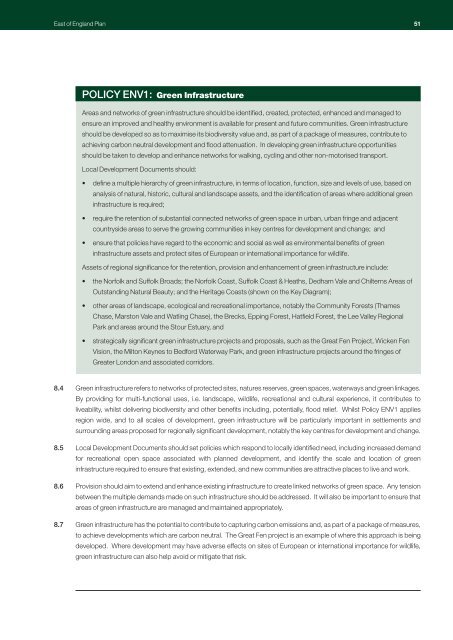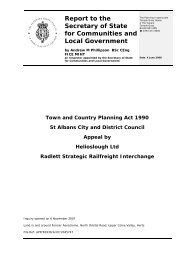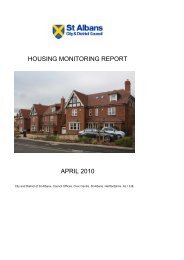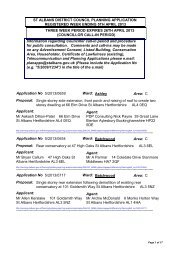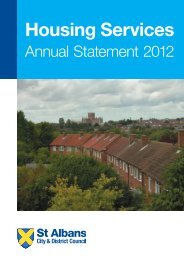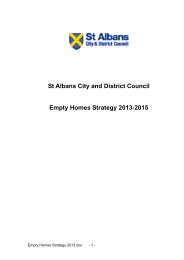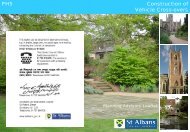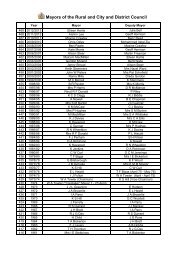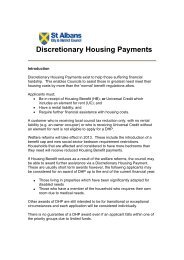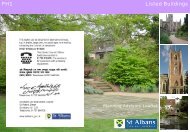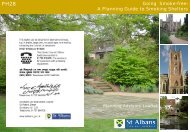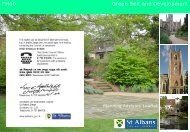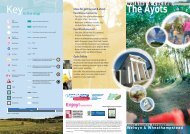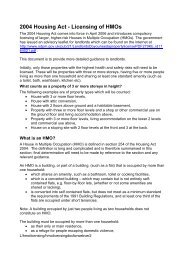RSS East Of England Plan - Broads Authority
RSS East Of England Plan - Broads Authority
RSS East Of England Plan - Broads Authority
You also want an ePaper? Increase the reach of your titles
YUMPU automatically turns print PDFs into web optimized ePapers that Google loves.
<strong>East</strong> of <strong>England</strong> <strong>Plan</strong> 51<br />
POLICY ENV1: Green Infrastructure<br />
Areas and networks of green infrastructure should be identified, created, protected, enhanced and managed to<br />
ensure an improved and healthy environment is available for present and future communities. Green infrastructure<br />
should be developed so as to maximise its biodiversity value and, as part of a package of measures, contribute to<br />
achieving carbon neutral development and flood attenuation. In developing green infrastructure opportunities<br />
should be taken to develop and enhance networks for walking, cycling and other non-motorised transport.<br />
Local Development Documents should:<br />
• define a multiple hierarchy of green infrastructure, in terms of location, function, size and levels of use, based on<br />
analysis of natural, historic, cultural and landscape assets, and the identification of areas where additional green<br />
infrastructure is required;<br />
• require the retention of substantial connected networks of green space in urban, urban fringe and adjacent<br />
countryside areas to serve the growing communities in key centres for development and change; and<br />
• ensure that policies have regard to the economic and social as well as environmental benefits of green<br />
infrastructure assets and protect sites of European or international importance for wildlife.<br />
Assets of regional significance for the retention, provision and enhancement of green infrastructure include:<br />
• the Norfolk and Suffolk <strong>Broads</strong>; the Norfolk Coast, Suffolk Coast & Heaths, Dedham Vale and Chilterns Areas of<br />
Outstanding Natural Beauty; and the Heritage Coasts (shown on the Key Diagram);<br />
• other areas of landscape, ecological and recreational importance, notably the Community Forests (Thames<br />
Chase, Marston Vale and Watling Chase), the Brecks, Epping Forest, Hatfield Forest, the Lee Valley Regional<br />
Park and areas around the Stour Estuary, and<br />
• strategically significant green infrastructure projects and proposals, such as the Great Fen Project, Wicken Fen<br />
Vision, the Milton Keynes to Bedford Waterway Park, and green infrastructure projects around the fringes of<br />
Greater London and associated corridors.<br />
8.4 Green infrastructure refers to networks of protected sites, natures reserves, green spaces, waterways and green linkages.<br />
By providing for multi-functional uses, i.e. landscape, wildlife, recreational and cultural experience, it contributes to<br />
liveability, whilst delivering biodiversity and other benefits including, potentially, flood relief. Whilst Policy ENV1 applies<br />
region wide, and to all scales of development, green infrastructure will be particularly important in settlements and<br />
surrounding areas proposed for regionally significant development, notably the key centres for development and change.<br />
8.5 Local Development Documents should set policies which respond to locally identified need, including increased demand<br />
for recreational open space associated with planned development, and identify the scale and location of green<br />
infrastructure required to ensure that existing, extended, and new communities are attractive places to live and work.<br />
8.6 Provision should aim to extend and enhance existing infrastructure to create linked networks of green space. Any tension<br />
between the multiple demands made on such infrastructure should be addressed. It will also be important to ensure that<br />
areas of green infrastructure are managed and maintained appropriately.<br />
8.7 Green infrastructure has the potential to contribute to capturing carbon emissions and, as part of a package of measures,<br />
to achieve developments which are carbon neutral. The Great Fen project is an example of where this approach is being<br />
developed. Where development may have adverse effects on sites of European or international importance for wildlife,<br />
green infrastructure can also help avoid or mitigate that risk.


